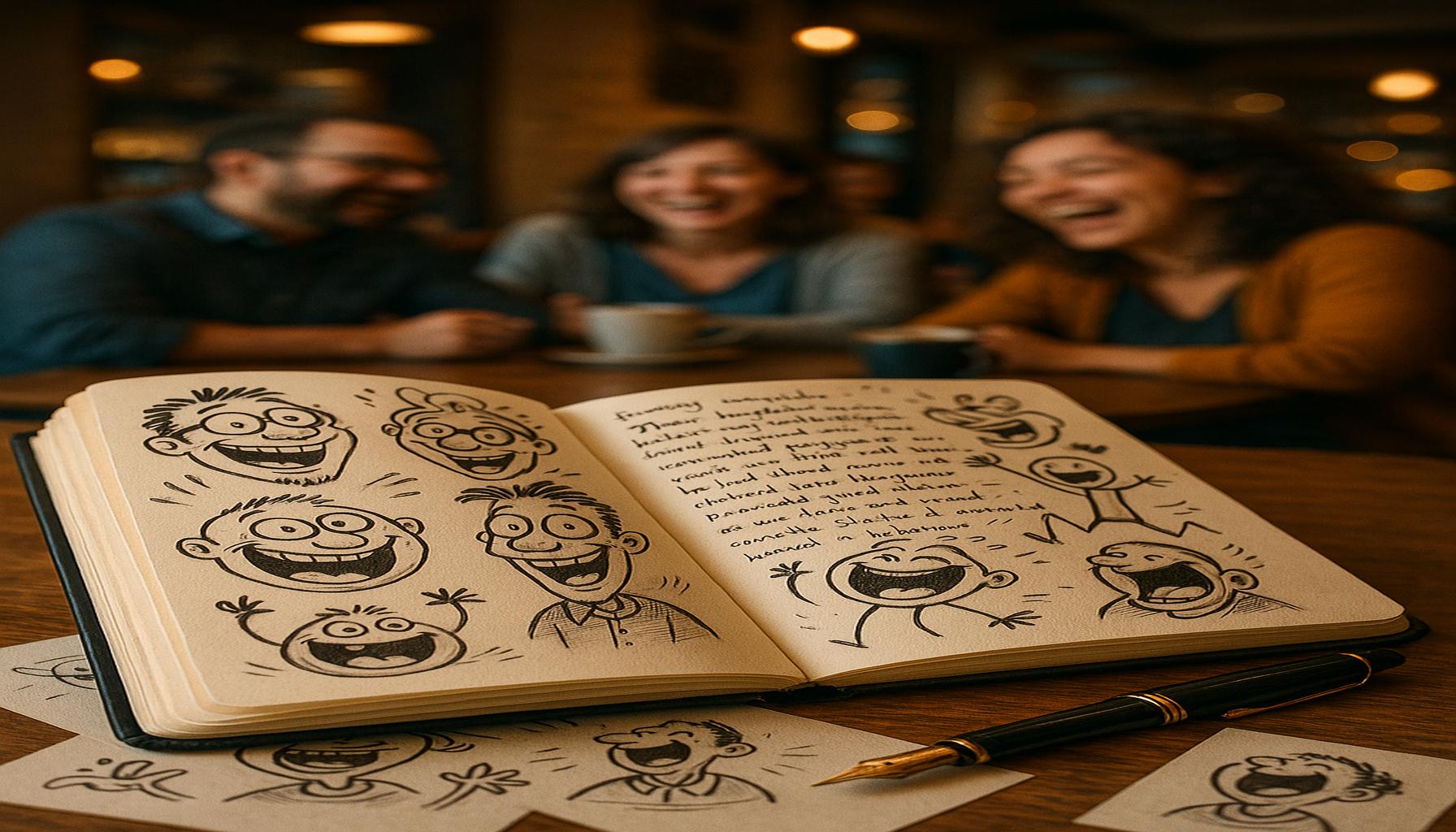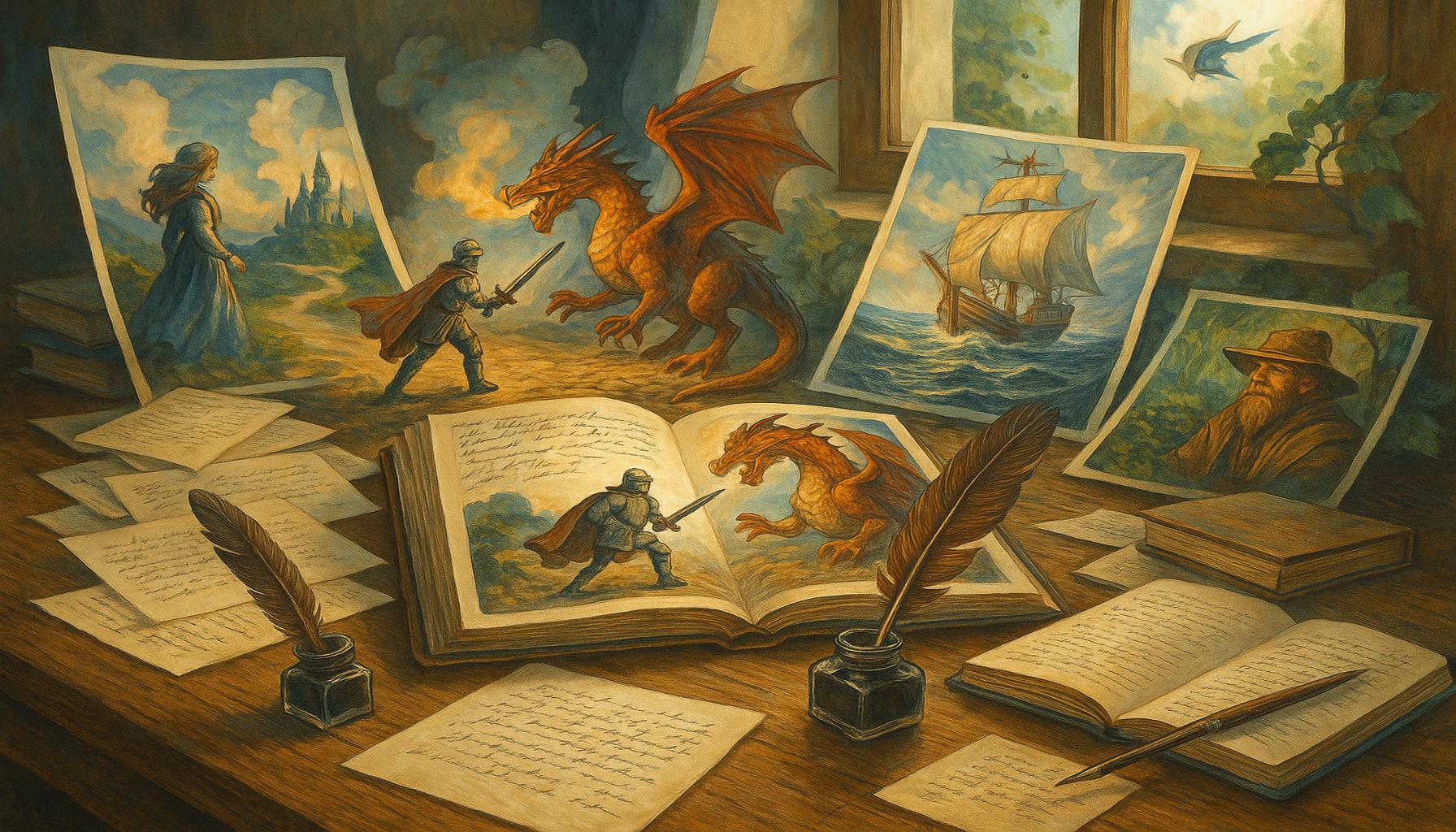Collaborative Writing: Creating Group Stories and Building Communities

Unlocking Creativity Through Collaboration
In a digital age where barriers to storytelling are rapidly dissolving, collaborative writing emerges as a powerful tool. This innovative approach not only allows writers to weave their narratives together but also fosters vibrant communities. With creative partnerships blossoming online, the potential for unique group stories is limitless. The democratization of content creation has opened doors for individuals who might not have previously considered themselves writers, broadening the landscape of narrative forms and voices.
The Essence of Collaborative Writing
At its core, collaborative writing involves a collective effort to create content. This process can take many forms, including:
- Co-authored novels: Writers join forces to craft intricate plots that may blend different genres, styles, or themes. For instance, a contemporary romance could intertwine the perspectives of a drama-loving poet and an action-thriller enthusiast, resulting in an unexpected yet compelling narrative.
- Online forums: Platforms such as Wattpad and Reddit enable communities to develop stories through shared contributions, where each participant adds a paragraph or chapter, leading to diverse plot twists and character arcs. This method can be particularly engaging as it often surprises the writers themselves with where the story goes next.
- Writing prompts: Groups respond to challenges, creating themed narratives that encourage creativity. A writing prompt can inspire different interpretations, leading to varied stories. For example, a single prompt about “the last train home” could yield tales that range from a poignant love story to an adventure involving a time traveler.
The appeal lies in its inclusivity; individuals at all skill levels can participate. Engaging in collaborative writing not only enhances creativity but also builds strong connections. As writers share ideas and feedback, they create a supportive ecosystem that values input from every member. This synergy often results in enhanced storytelling techniques and personal growth as writers learn from one another’s strengths.
The Community Connection
Beyond the act of writing, collaborative efforts foster a sense of belonging. Participants often create lasting friendships built on shared passions, which can extend beyond the written word. These communities frequently organize virtual workshops, where members share tips on writing craft, narrative structure, or even marketing self-published works. As communities unite around storytelling, they also develop a rich tapestry of diverse perspectives that can challenge and inspire individuals to think outside their usual paradigms.
Moreover, the global nature of online communities means that writers can gain insights into different cultural narratives, enriching their own stories with varied experiences from around the world. This cross-pollination of ideas can lead to a more enriched literary landscape, encouraging more inclusive and innovative storytelling.
Discover how you can join this creative movement and embark on your journey in collaborative writing. Whether you’re drafting your first poem or collaborating with established authors, the landscape is filled with opportunities to explore and grow. Platforms dedicated to connecting writers, such as Scribophile and Story Wars, provide tools and resources to get involved. With a little curiosity and enthusiasm, you might just find your next great adventure in the world of shared storytelling.
DISCOVER MORE: Click here to find out how music can improve your well-being
The Power of Group Storytelling
Collaborative writing embodies the essence of community and shared creativity, allowing writers to come together and create stories that resonate with diverse audiences. This dynamic process not only produces captivating narratives but also cultivates vital relationships within writing communities. As the traditional barriers of writing fade away, the process becomes more accessible, inviting participants from various backgrounds to contribute their unique voices.
Benefits of Collaborative Writing
Engaging in collaborative writing offers numerous advantages that extend beyond the final product. Here are some key benefits of this collaborative approach:
- Diverse Perspectives: Bringing together writers from different walks of life fosters a rich tapestry of viewpoints. Each participant’s unique experiences can lead to innovative plot lines and character developments that might not emerge in solo writing.
- Improved Writing Skills: Collaborators have the opportunity to learn from one another’s strengths and weaknesses. Constructive feedback from peers can help budding writers refine their skills, enhancing everything from dialogue to character development.
- Enhanced Motivation: Writing can often feel like a solitary endeavor, leading to writer’s block or waning enthusiasm. Collaborative writing creates accountability and camaraderie, motivating individuals to stay committed to their craft and deadlines.
- Creative Freedom: The collaborative process encourages experimentation. Writers are often more willing to step outside of their comfort zones and explore different genres and styles when participating in a group setting.
In addition to these benefits, collaborative writing plays a significant role in fostering connections among participants. Members often develop friendships based on shared creative pursuits, leading to further opportunities for collaboration. These relationships are particularly vital in online communities, where physical distance does not hinder the creation of deep bonds.
Online Platforms: Facilitating Community Engagement
The rise of various digital platforms has revolutionized collaborative writing. Websites such as Wattpad, Scribophile, and Story Wars provide writers with the tools necessary to connect, share ideas, and participate in group projects. These platforms not only host the written work but also support discussions and feedback, enabling participants to refine their storytelling craft together.
Additionally, social media has become integral for writers seeking to expand their audience and connect with other creatives. Writers can join groups on platforms like Facebook or engage with hashtags like #amwriting on Twitter to share their work, receive feedback, and even initiate collaborative projects. This sense of community promotes a supportive environment where creativity can flourish.
As writers embark on their collaborative journeys, they not only create compelling stories but also lay the foundation for lasting friendships and networks. The strength of these connections can ultimately lead to more opportunities for writing and collaboration, pushing individual and collective creativity to new heights.
| Advantage | Description |
|---|---|
| Enhanced Creativity | Collaboration brings diverse perspectives, encouraging innovative storytelling and richer narratives. |
| Community Building | Engaging in group writing fosters connections, creating a supportive network for writers and readers alike. |
Collaborative writing is a powerful tool for enhancing creativity. When writers come together, their unique perspectives blend to inspire innovative storytelling. This shared experience not only generates original ideas but also strengthens the narrative through various viewpoints. An individual story can be transformed into a richer tapestry, embracing elements that a single writer may overlook. Moreover, the act of co-creating stories fosters a sense of belonging among participants, thus contributing to community building. It transcends the traditional barriers of authorship and promotes a supportive network. Writers and readers develop vital connections, sharing insights and experiences that deepen their engagement. In essence, collaborative writing cultivates both artistic expression and social interaction, making it a vital component of modern storytelling methods.
DISCOVER: Click here to unlock the healing power of journaling
Building Stronger Communities through Writing
Collaborative writing transcends mere storytelling; it is the cornerstone of community building, particularly in an era where digital connections are integral to our social fabric. As writers join forces to craft stories, they unknowingly forge bonds that can evolve into solid support networks, to encourage one another not just in writing but in life itself. This phenomenon is evident in myriad successful collaborations that have emerged across the globe, showcasing the unparalleled power of collective creativity.
Cultivating Inclusivity and Empowerment
One of the fundamental aspects of collaborative writing is its inherent ability to promote inclusivity. Projects like the NaNoWriMo (National Novel Writing Month) challenge writers to come together in a supportive environment, working towards the common goal of completing a 50,000-word novel within a month. This initiative not only motivates individuals to unleash their creative potential but also extends a welcoming invitation to diverse populations, fostering an empowering atmosphere where everyone’s story is valued.
Furthermore, group writing endeavors that engage participants from varied backgrounds—such as gender, ethnicity, and socio-economic status—can serve as a microcosm for societal inclusivity. By integrating these varied perspectives, stories become richer and more relatable, thereby captivating a wider audience. Projects like the Voices from the Field initiative stem from this concept, where individuals are encouraged to share their lived experiences through collective storytelling, highlighting the unifying nature of shared narratives.
The Role of Workshops and Retreats
To further enhance collaborative writing efforts, numerous workshops and retreats have been developed across the United States. These gatherings allow aspiring writers to immerse themselves in a nurturing environment dedicated to growth and creativity. For instance, the Maine Writer’s Retreat combines the collaborative spirit with structured writing time, providing participants the chance to both learn from established authors and collaborate with peers. Such intentional design helps attendees not only cultivate new relationships but also engage in brainstorming and co-writing sessions that often lead to exceptional literary outcomes.
Moreover, virtual workshops have become increasingly popular, allowing individuals from various geographical locations to connect and collaborate in real time. These online meetings often produce spontaneous bursts of creativity as participants share ideas and build off one another’s contributions. Educational platforms like Coursera and MasterClass now offer courses focused on collaborative writing techniques, elevating the skill set of countless writers eager to harness the power of synergy.
Collaboration Beyond the Page
The impact of collaborative writing is not limited to the texts produced. As writers engage in co-creation, they also frequently extend their collaborations into other forms of art, from theater productions to multimedia presentations. This cross-discipline approach celebrates diverse talents and opens the door for collective storytelling to reach audiences in innovative ways. For instance, projects like The Moth showcase true stories told live on stage, where individual narratives intertwine, further solidifying the notion that stories can unite and inspire in countless forms.
As community-building through collaborative writing continues to evolve, individuals are inspired to seek out connections that transcend boundaries, enriching both their creative practices and their lives.
DISCOVER MORE: Click here to dive into the art of storytelling
Conclusion: The Future of Collaborative Writing and Community Building
In an age defined by digital interconnectivity, collaborative writing emerges as a transformative force that not only enriches storytelling but also cultivates vibrant communities. As writers unite to create group stories, they share their unique voices and experiences, shaping narratives that resonate on multiple levels. Projects like NaNoWriMo and initiatives such as Voices from the Field demonstrate how collaborative writing serves as a vehicle for inclusivity and empowerment, allowing diverse backgrounds to coalesce into powerful narratives that captivate broader audiences.
Moreover, through workshops, retreats, and virtual platforms, aspiring writers gain access to collaborative spaces where relationships blossom and creativity flourishes. This continual exchange of ideas fosters an innovative environment, encouraging participants to stretch the boundaries of their artistry, both on the page and beyond. The integration of collaborative writing with other art forms, such as theater and multimedia, highlights its versatility and the exciting possibilities that lie ahead.
As we look forward, the potential of collaborative writing to shape not only stories but also to bind communities together remains vast. With each story crafted in unity, the strength of human connection deepens, proving that when we write together, we indeed have the power to inspire change and foster understanding. Whether through shared experiences or collective creativity, the journey of collaborative writing invites us all to contribute our narratives and, in turn, weave a rich tapestry that reflects the diversity of our lives.


